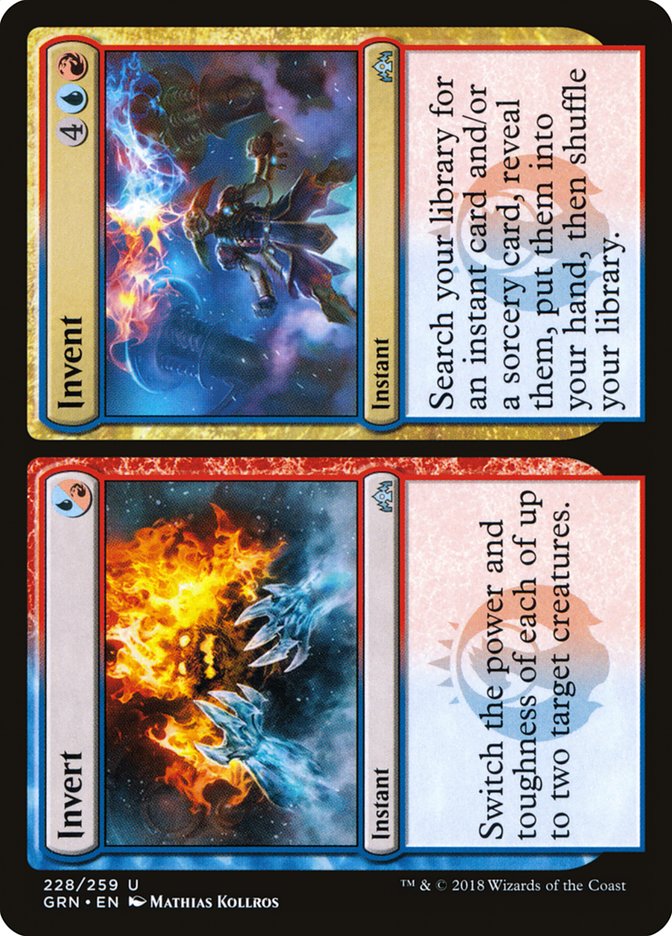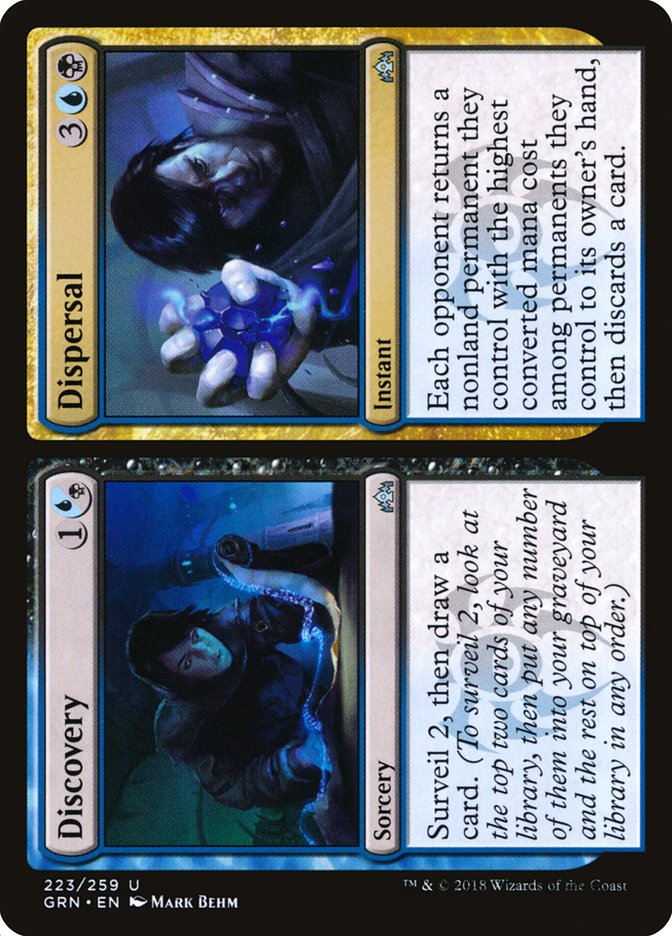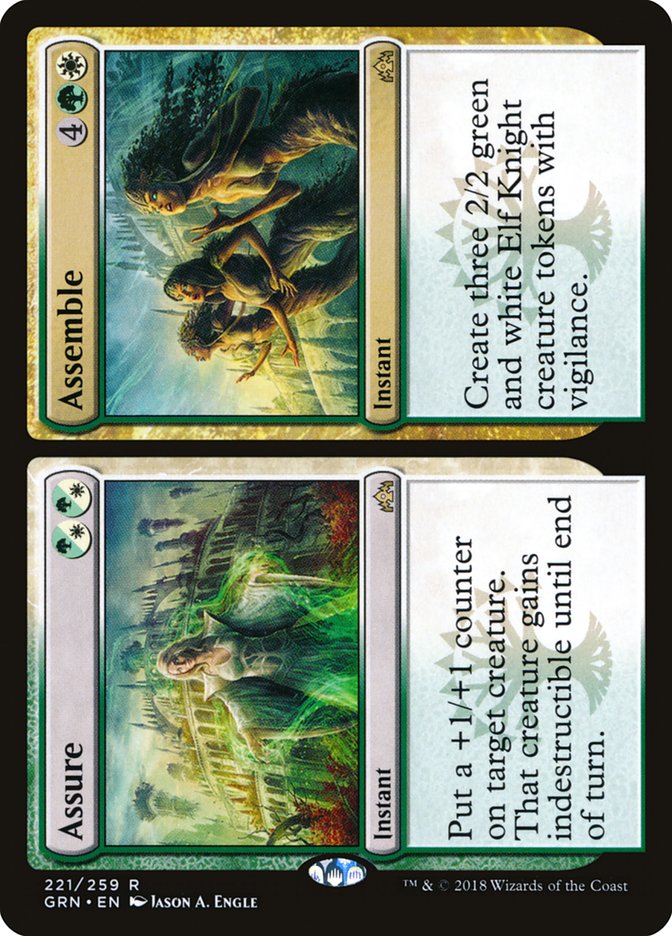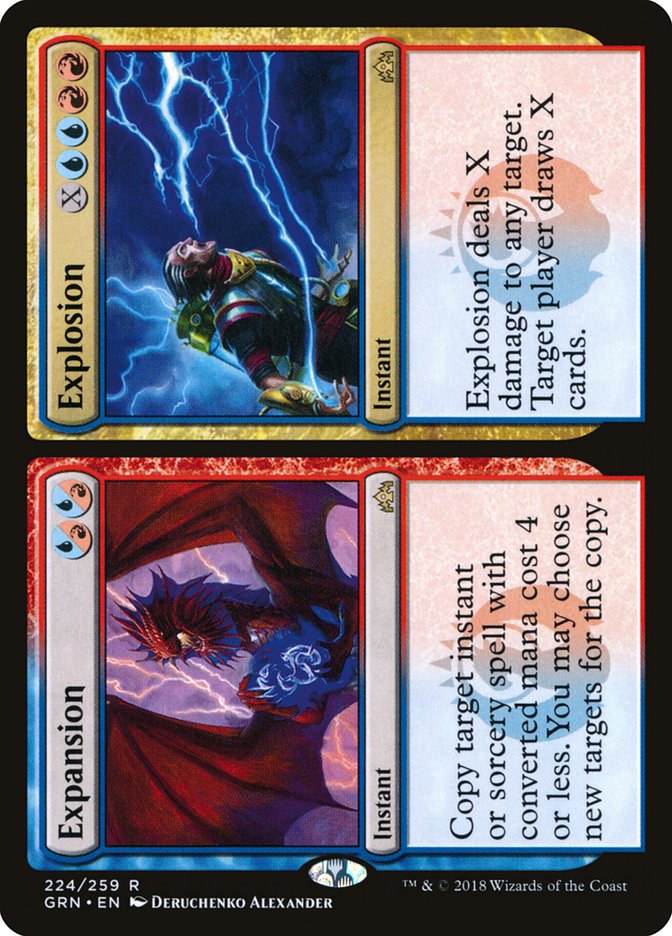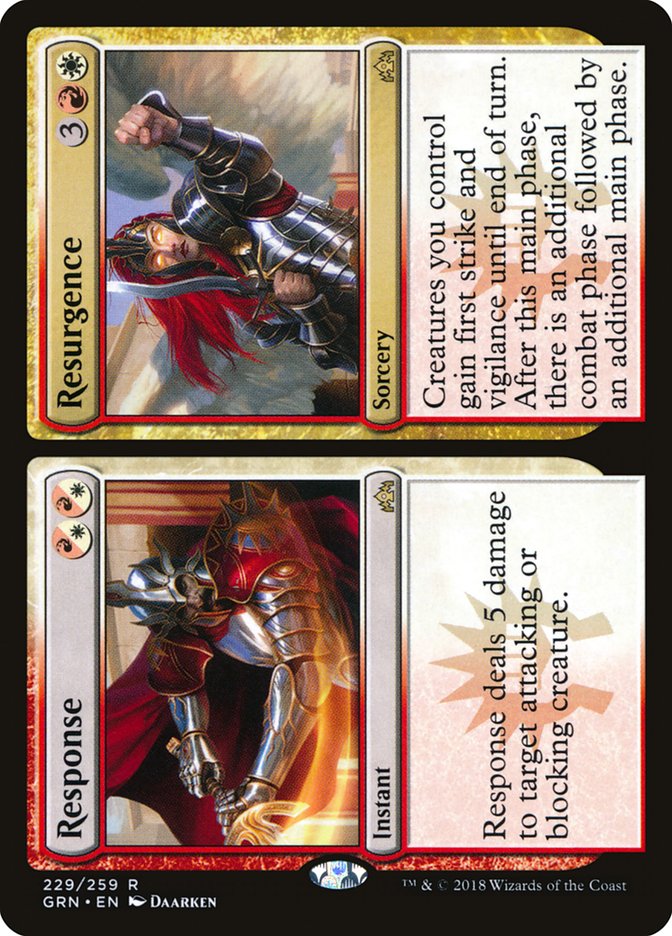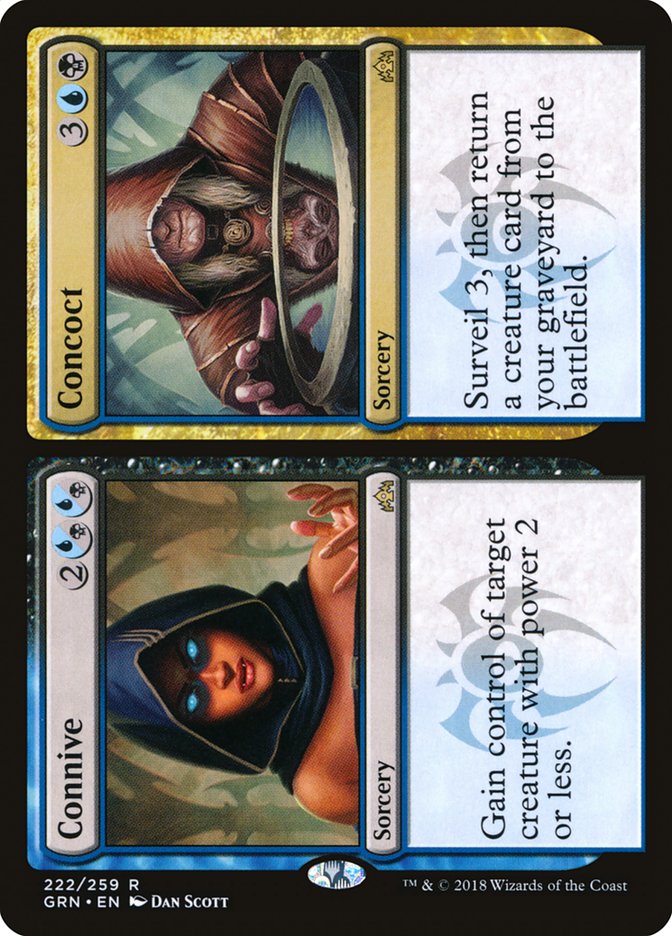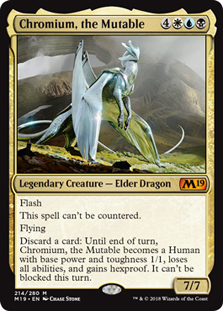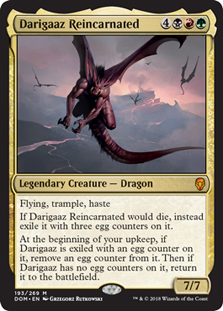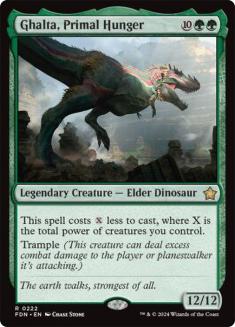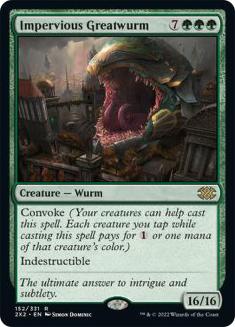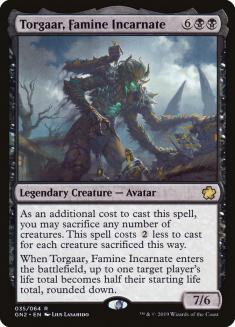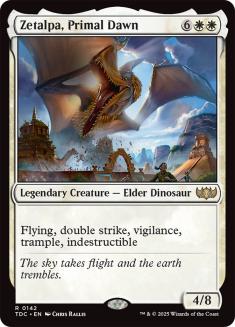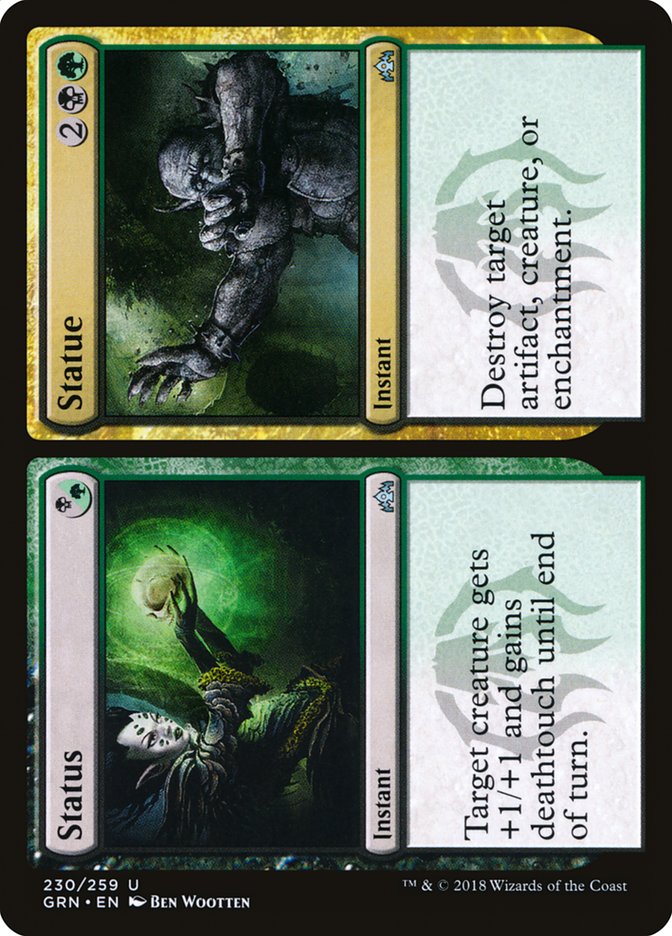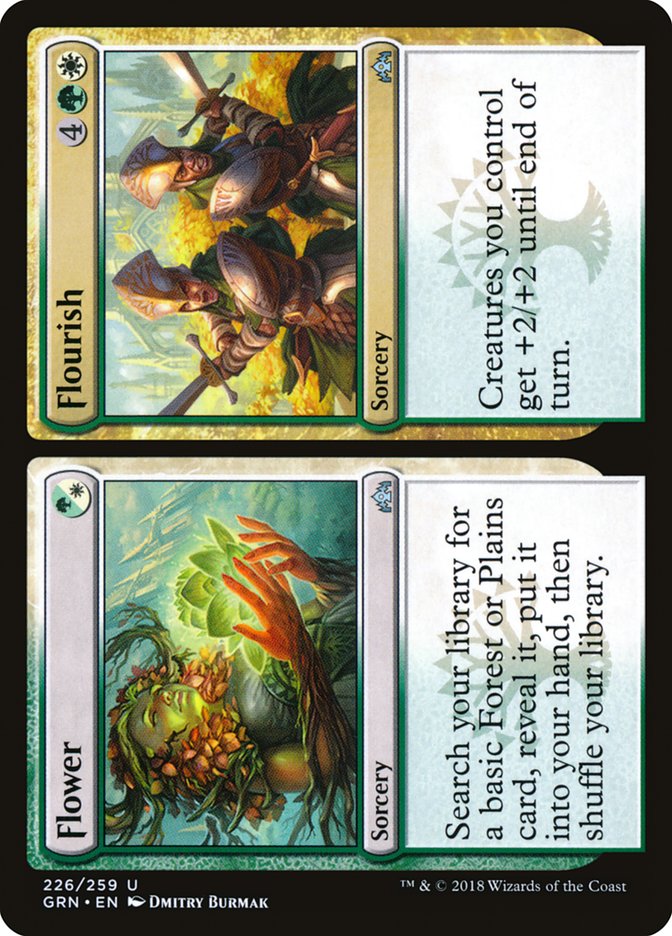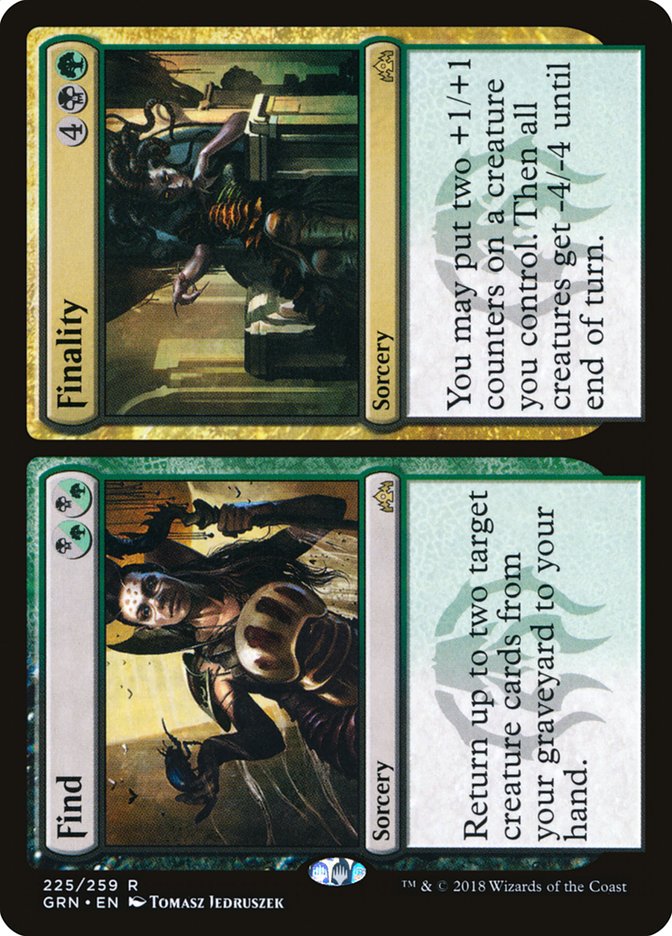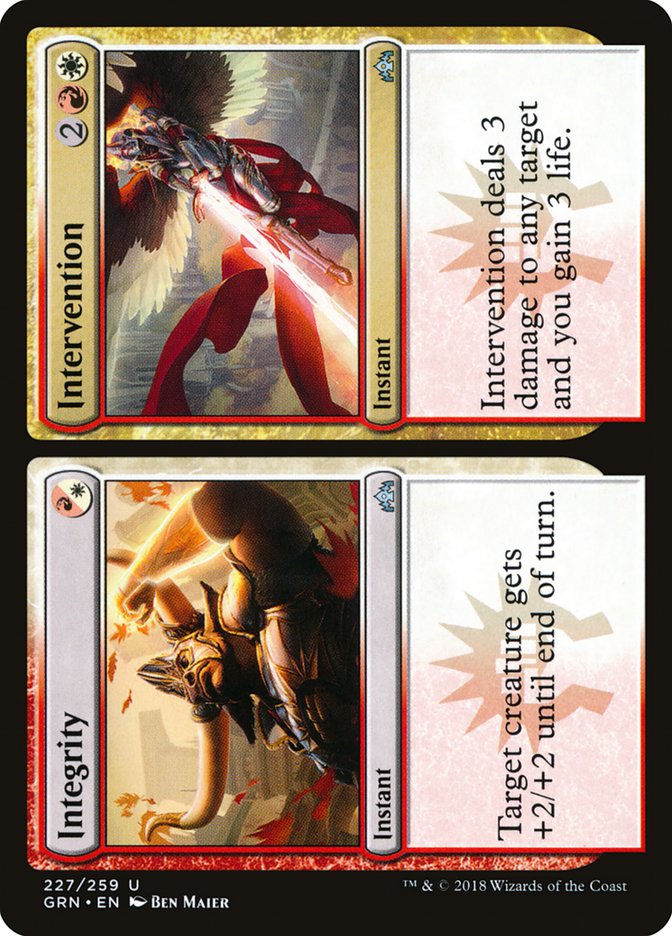Guilds of Ravnica has the best split card cycle of all time.
Maybe not every single one of them, but the average playability of these cards is off the charts. Even the “least playable” cards in the cycle tend to have powerful effects. Of the ten of them, only one of them is difficult to find a home for in Constructed.
Naturally, some of them are going to be better than others, but people around the Internet tend to have some mental shortcuts in place that lead to misevaluations of some of the best cards in Guilds of Ravnica.
Some of the cards are more obviously good than others, and ranking them provides an easy, clear-cut way to give perspective on just how good some of these cards are. With ten cards to cover and only so much time, let’s jump in:
#10 – Invert // Invent
When evaluating split cards, one of the first things we must ask ourselves is, “How playable are these cards?” Simply put, Invert is barely playable on its face, and Invent is particularly costly when compared to other cards of similar converted mana costs in the format.
The following thing to check is how well the two spells play in the same deck. This criterion is a matter of versatility and a large part of evaluating split cards is considering how frequently each will be a playable Magic card.
Invert reads as the kind of card that will play as a piece in some sort of “gotcha!” combo with creatures at a low printed power and a high printed toughness. Invent is going to reward decks that make the game go long and make use of the card advantage and toolbox-y effect that it provides.
The low quality of each individual card, coupled with the tension between them, is going to firmly put Invert at the bottom of the list.
After Invert, there’s a fairly marked shift in power level, with cards in the next “tier” being far more likely to see the light of day in Constructed.
#9 – Discovery // Dispersal
How playable is each card? Discovery is… underwhelming. Outside of graveyard-based synergy decks, Strategic Planning didn’t see a large amount of play, and this is fairly similar in rate. If Discovery does end up seeing play, it will be on the back of Surveil synergies rather than by its own merit.
Dispersal is harder to evaluate. The card rewards patience in a big way, initially reading like a pseudo-Edict while being more powerful because of the fact that it can’t be insulated against in the same way as the typical Edict; it’s going to get the most expensive permanent the opponent controls, every time. The longer the game goes, the fewer cards the opponent will have in hand and if they end up without anything in hand, Dispersal will likely be doing a fairly handsome Vindicate impression – one that can get around hexproof, at that.
The two cards play together reasonably, with their mana costs playing a role in illustrating the fact that they’re going to slot into slower archetypes; low-to-the-ground aggro decks aren’t interested in two-mana cantrips like Anticipate, after all. Unfortunately, their mana costs will frequently end up making them close-but-not-quite-good-enough through their residency in Standard.
On the other hand, if the Surveil mechanic does end up having an entire archetype dedicated to it, this will absolutely be a four-of in every single iteration of the deck.
#8 – Assure // Assemble
Assure itself is not good. Assemble makes this card exciting.
There are tons of ways to “properly” consider split cards and Assure is the first one on this list that is best mentally compartmentalized as “Assemble with a backup mode.” In the same vein as cycling, Assure is something more akin to an effect that may come in handy from time to time, but it isn’t the reason to be playing the card.
Three 2/2s with flash? That’s a reason to play a card. Assemble is excellent at pressuring planeswalkers and good at providing enough of a ground force to make it difficult to justify simply attacking into.
Assure has the same problems that Heroic Intervention does. The issue in today’s Standard is that indestructible isn’t as powerful as it used to be, what with Vraska’s Contempt, Settle the Wreckage, and so on.
It’s likely that Assure will gain a bunch of value in a post-Ixalan world, but in the meantime, we’ll have to settle for one of the most powerful combat tricks in the format, with a cheaper combat trick thrown in for backdoor purposes.
#7 – Expansion // Explosion
The problems with Expansion are very similar to the problems with Invert. It’s unlikely that most decks are going to want a Twincast that’s easy on the mana, and it’s unlikely that Invoke the Firemind is going to be that much better this time around.
The difference is that these two cards play well together and are both significantly more powerful that the halves of Invert // Invent. At the risk of falling into the trap of simply listing every single eligible spell to copy in the format, the fact is that Expansion shines as a role-player, particularly in control mirrors.
Expansion is going to function as an extra Negate in counterspell wars and do a beautiful Chemister’s Insight impression when its caster is short on cards. Games that tend to go long are exactly the kinds of games where Explosion will be bananas.
Invert // Invent is two cards that are sweet and glued together. Expansion // Explosion is two cards that were built in tandem with one another. It really does make all the difference.
#6 – Response // Resurgence
Response is absolutely fine. Reasonable. Boring. Playable. Fine.
Also, it has Resurgence.
Immolating Glare variants have popped up time and time again and this is no different. The key difference is that Resurgence helps decks that want Immolating Glare turn the corner in a big way.
Imagine you’re playing an aggressive deck against Azorius Control. After playing around Response, it gets to Turn 5 and the Azorius player casts Lyra Dawnbringer. Suddenly, you’re going to wish that they weren’t about to take multiple combat steps next turn.
This is naturally sort of Magical Christmas Land territory, but the fact that Response even works on blocking creatures means that it’s able to help aggro decks punch through most things that would block and give them fits, like Lyra Dawnbringer
Response // Resurgence is another card that falls into a similar vein as Assure // Assemble. There’s a perfectly reasonable card here that has an entire other spell attached to it.
#5 – Connive // Concoct
Connive features a pair of cards that are both particularly situational. Creatures need to be playable, preferably in the Dimir color combination. Anybody who played during Theros Standard is going to remember that Domestication was a format staple and Connive is doing something very similar; also, it has a better version of Rise from the Grave attached.
On the other hand, Connive can also act as both the enabler and payoff card for a Reanimator-style strategy, and there isn’t exactly a shortage of big things to power out:
Connive // Concoct marks the next jump in power level from the previous set of split cards. Both Connive and Concoct are cards that could play well on their own; they just happen to function as both cards and give their casters infinitely more options.
All the cards from here on are cards that I would wholly expect to see play in Standard.
#4 – Status // Statue
Okay, this one is admittedly a bit speculative.
Statue is a fairly reasonable spell on its own. We’ve been casting Vraska’s Contempt for a year now and this is only marginally worse than Vraska’s Contempt is.
Status is this high because giving a creature deathtouch pairs well with another card that’s enjoyed a bit of success over the past few months.
Most of the Internet has caught on to the fact that Status and Goblin Chainwhirler are a good combination, but mana will hold them back at first. The RRR required to cast Goblin Chainwhirler effectively demands 22 unique red sources to cast it on time, but without Rakdos or Gruul providing the requisite untapped sources of red plus green or black, being able to get this combo online in a timely fashion isn’t exactly reliable.
Once those lands are available, Status ends up with a third mode, so to speak. It has the combat trick, it has the removal spell, and then it also has:
Stretcher
B or G
Instant
If a card named Goblin Chainwhirler has entered the battlefield this turn, destroy all creatures your opponents control.
In today’s world, Status likely will show up a little lower on this list, but give it some time, and it wouldn’t be shocking if it were to end up seeing more play than any of its counterparts throughout their stay in the format.
#3 – Flower // Flourish
Here’s another tier bump for you: if you aren’t already playing the top three of this list, you’re doing it wrong.
It seems silly to have to convince people that the newest iteration of Attune with Aether and Traverse the Ulvenwald is playable, but here goes…
Imagine that Flower is effectively a Selesnya Guildgate. Sure, it isn’t literally a multicolor land that enters the battlefield tapped, but in terms of functionality, it allows its caster to continue developing, yet forces them to sink a single mana into the fixing it’s providing.
Then, sometimes this enters-the-battlefield-tapped dual land is going to work as an Overrun effect.
That’s it.
This isn’t rocket science. Flower is effectively a spell-land and being the only color getting one in this set is going to work wonders on putting Selesnya above the competition. The fact that the first half is a hybrid mana means that a fair number of nonwhite green decks and nongreen white decks will be able to splash it for an incredibly low opportunity cost.
If you’re playing green and white, you should be playing Flower // Flourish. Period.
#2 – Find // Finality
Draw two spells for two mana? Nice.
A Wrath effect that involves keeping your biggest creature? You had my curiosity, but now you have my attention.
Find // Finality finds itself in Golgari, and it isn’t an accident that it found itself in the colors that historically lend themselves to “Rock” strategies.
Grind-intensive Golgari decks frequently find themselves casting an endless stream of removal and hand disruption spells that exchange resources at a one-for-one rate, with a single card or two finding a way to capitalize on the severe reduction of resources that the deck creates on both sides.
Find // Finality plays to either kind of matchup that a Golgari deck may find itself in. Against faster aggressive matchups that put the Golgari deck on the back foot, Finality is going to provide a fantastic form of card advantage to catch back up on the battlefield. In the matchups where presenting threat after threat after threat is going to be the avenue to victory, Find keeps the gas coming.
Find // Finality will be the linchpin of Golgari decks for the next two years. Mark my words.
#1 – Integrity // Intervention
When fleshing out the body of this article, I didn’t originally expect one of the uncommon split cards to stand head-and-shoulders above the rest, but here we are.
Integrity is easily the most important split card printed in Guilds of Ravnica, but its entire context puts it at the top of this list. “Combat trick plus crappy Lightning Helix” doesn’t exactly sound appetizing.
Except the best aggro deck in the format cares about attacking with all its creatures, big and small:
Creatures (25)
- 3 Rekindling Phoenix
- 4 Boros Challenger
- 4 Legion Warboss
- 4 Goblin Banneret
- 3 Aurelia, Exemplar of Justice
- 4 Swiftblade Vindicator
- 3 Tajic, Legion's Edge
Lands (8)
Spells (27)

As a mechanic, Mentor poses countless ways to approach combat, but at face value, what we know is that attacking with multiple creatures a turn is the place to be. The increased emphasis on combat naturally brings the value of combat tricks up with it. That only begins to brush on how casting Integrity before attackers are declared can make creatures with Mentor grow their comrades that normally would be out of range.
There’s also a creature with double strike and trample in the deck, if there needs to be a single card to point towards and say “this right here is what pushes Integrity over the top.”
On the topic of “a crappy Lightning Helix,” context, context, context. We don’t have Lightning Helix. It isn’t legal. Having a bad version of a card that makes the “best burn spells ever printed” list isn’t really a good drag on something in the first place. What Intervention does is it plays well to the way that Standard aggro decks tend to work. Integrity helps the deck press an early advantage and stay ahead on the table. Intervention provides reach and slams the door shut in the later turns.
Cards don’t have to be the best iteration of their effect ever printed; they just have to be the best version available. In that respect, Integrity more than delivers.


